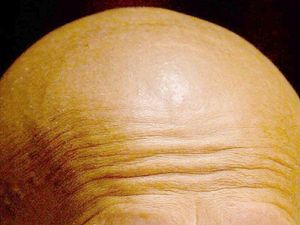Premature balding a ‘bigger risk factor for heart disease than obesity’
A study has linked male-pattern baldness and turning grey young with a greater risk of heart disease before the age of 40.

Prematurely grey and balding men may be at greater risk of early heart disease, say scientists.
A new study has linked male-pattern baldness and turning grey young with a more than five-fold risk of heart disease before the age of 40.
It was a bigger risk factor than obesity, which raised the risk of early heart disease four times.

“Premature greying and androgenic alopecia (male-pattern baldness) correlate well with vascular age irrespective of chronological age and are plausible risk factors for coronary artery disease.”
The study compared 790 men who had heart disease despite being aged under 40 and 1,270 age-matched healthy men.
Participants were given scores for increasing levels of male-pattern baldness and hair whitening, and it was found that young men with heart disease were significantly more likely to be prematurely grey or balding than the healthy individuals.

“These factors may indicate biological, rather than chronological, age which may be important in determining total cardiovascular risk.
“Currently physicians use common sense to estimate biological age but a validated scale is needed.”
The findings were presented at the 69th Annual Conference of the Cardiological Society of India in Kolkata, India.
British expert Professor Alun Hughes, from University College London, said: “Correlations between grey hair and risk of heart disease have been observed before, although a causal link has not been demonstrated.
“Nevertheless, since grey hair is due to impaired renewal of melanocyte stem cells, people have speculated that it may be an indicator of DNA damage associated with ageing.
“Also, since hair follicles are a target for androgens (eg testosterone) it has been suggested that early male pattern baldness could reflect differences in responses to androgens that might influence the risk of heart disease.”





